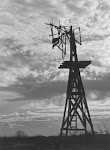52 Ancestors in 52 Weeks. Week #36 theme
is Exploration.
There are many ways to explore in genealogy searching: Online records, libraries, other people’s trees, newspapers, or in person. We have prepared by
doing all of the above, and then headed out, off the beaten path, to visit the
locations where our ancestors lived. So far, we have visited more than 25 locations
in Oklahoma, Kansas, Texas, Arkansas, Tennessee, Kentucky, Mississippi, Alabama, Georgia,
North Carolina, Virginia, West Virginia, Rhode Island, Connecticut, and New
York. We took many, many photographs along the way and my husband has even painted watercolors of some locations.
There are so many photographs, that I need to choose just one family line for this post. You will see where we explored our Griffin line, starting with John Griffin, immigrant from Wales, who arrived in Connecticut about 1640. We visited Granby and Simsbury, where roads, farms and even shopping centers bear the Griffin name. The photo below is a current day sheep farm on the original land called Griffin’s Farmstead. Of course the structure was not there in 1640. John's son, Thomas, was born on that property, in 1658.
Thomas Griffin was the father of Benoni Griffin,Sr., born 1714. His mill was located at The Falls, on the Farmington River, in Simsbury, CT. It was formerly owned by his grandfather, John Griffin. We found the Farmington River, but couldn't see The Falls.
His son Jonathan married Rachel Sharp and lived on Stony Creek, which is near the present city of Marlinton, West Virginia. We explored the area, still known as the Griffin land. Photo is of the working farm there.
In 1889, when land was opened in Oklahoma Territory, a claim was staked in William’s name, by his youngest son, Pete Griffin. A few years later, Samuel’s widow, Lizzie, brought her family to that same property, west of Edmond, and homesteaded. Charley and his siblings helped to farm the land, near Waterloo Road and Portland. Photo is of hay bales, as the land is still agricultural, although near one of the fastest growing cities in Oklahoma.
Charley married Hattie McGill (of another 89er family) and for a time they farmed near Ahpeatone, in Cotton County OK. My father, Dan Griffin, shared his boyhood memories of living in Cotton County, and fun with his brothers. We believe this is the house they lived in.
The last photo is the house where Charley and family lived in Edmond, Oklahoma, where our own family memories include porch swings, marking our heights on the door frame, fun with cousins, celebrating Christmas and Fourth of July, and more.














